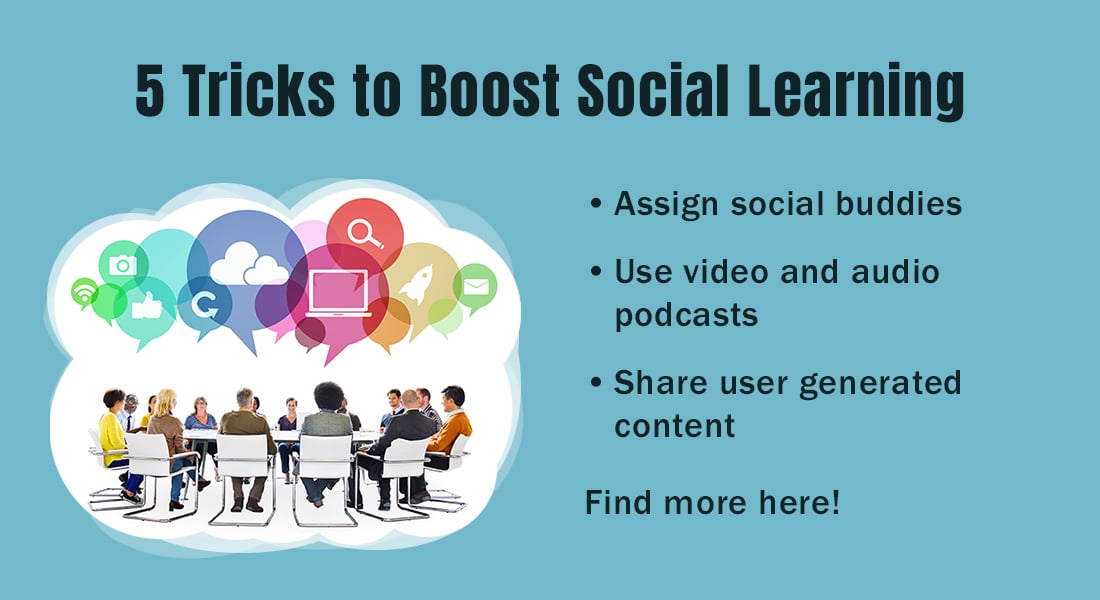4 Tips From In-house Experts For Better E-learning Design – Part 1

Y ou have created an impressive user interface for an eLearning course and presented the content using good interactivities and scenarios, but the reports show that the course was not effective. Why?
→ Download eBook- eLearning Trends
Is it because of the visual design, rich visuals, interactivities, scenarios, or other elements? No! It’s mostly because of poor eLearning design.
Some Common Mistakes Committed in eLearning Design
Here are a few common mistakes we do, that eventually result in a poor eLearning design.
- Not factoring-in client requirement perfectly
- Misunderstanding the objective of the learning experience
- Inefficient/inappropriate instructional strategies
- Imbalance of on-screen text (OST) and audio
Here are a few practical tips from some of our in-house eLearning experts to overcome these problems.
Understand Stakeholder Requirement Perfectly
In any project, all of us arrange a project kick-off call and discuss with the customer regarding their requirement and how we are going to take the project further. We also factor in style guides and requirements of the customer. But, we might forget or not factor some important requirement, which might create problems later. It is essential to always inventory customer requirements and make sure the product perfectly matches the requirements. If the stakeholder specifies how the course should be, we need to strictly adhere to those specified points. If required, you can improvise, but it has to be ensured that stakeholder’s consent is taken.
Enhance Learning – Don’t Just Present Content
What is the objective of a learning experience? Is it delivering content or enhancing the learning of the learner? Undoubtedly, enhancing learning. If we present loads of content (text) with awesome effects and interactivities, it doesn’t mean that we have created an effective eLearning course. eLearning is effective only when the learner applies the learning from the course and does something correctly. So, analyze your audience (learners) and ensure that eLearning enhances their learning.
Challenge the learner and provide constructive feedback, so that the learner can learn from his/her mistakes.

eLearning Trends for 2024
Seal the Deal with Success
- Training Formats for Upskilling and Reskilling
- Popular AI Tools for L&D
- Mastering the New-Age Learning Formats
- And More!
Understand the Content and then Finalize the Strategy
While working on an eLearning project, do you ever come across statements such as – ‘The course must be engaging and highly interactive’, ‘Use more of interactivities’? Most of us do, right? But the point is, are we using interactivities, scenarios, etc. just for the sake of using them or are we using them because the content demands them? Always think before you use a strategy to deliver content. For example, if the learner doesn’t know how an eagle looks like, we can straightaway show the real image of an eagle rather than showing the animated version of it. Also, if we are teaching the learner how to repair a damaged motor, we can teach the repairing process using an animation or a video rather than showing a real image of a damaged motor and presenting all the 10 steps beside it as on-screen text (OST).
Balance On-screen Text and Audio
Audio is one of the key elements we use in eLearning, unless the stakeholder is not expecting any audio. But, if the course has an audio element, match the audio with the on-screen text and visuals properly. For example, it is not correct if you have three major points on the screen and the audio explains a lot, say 20 points, without showing anything on the screen. It increases the cognitive load of the learner. On the other hand, too much content on the screen also increases cognitive load. So, present a single learning point in one screen and ensure the audio and OST go hand-in-hand. Besides, get the consent of the stakeholder on the audio script so that redundant audio can be chopped off.
Apart from being visually rich, an eLearning design must enhance learning. In my next post, we will see some more practical tips which will help you create a better eLearning design. So, stay tuned.





